Everyone’s Posting Their Favorite Vines, So I Thought I’d Hop On This Bandwagon.
Everyone’s posting their favorite vines, so I thought I’d hop on this bandwagon.
More Posts from The-reconing and Others
Hey, could you tell me how you make linart a different color without having to erase and redraw? I've seen it happen on a couple speed paints and on some of your sketches but no idea how to do it myself
(this is a wip sketch i have) |(this is also the art progam SAI)

1. have your original layer(i usually use red for my sketches)

2. create a new layer

3. click the Clipping Group tab, a red line will appear next to the layer this is applied to

4. then just add whatever color your changing your sketches/lineart to and voila! as simple as that! i hope this lil thrown together tutorial helps!




Immerse yourself in a symphony of colors as summer’s wildflower meadows dance in the gentle breeze. Each petal a stroke of nature’s brush, painting a vibrant masterpiece that whispers of fleeting beauty. Serenity envelops the air as bees hum a soft melody, nature’s harmony unfolding before our mesmerized eyes. Let your soul wander among these wild wonders, basking in the magic of summer’s vibrant blooms. 🌸🌿🌼

Rabbit Ballet
👠👠👠
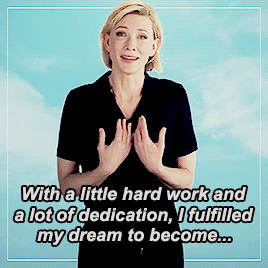
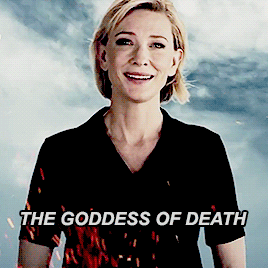
For the love of god stop





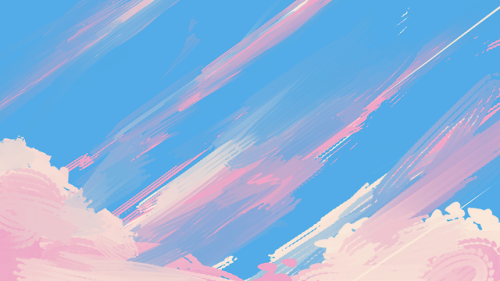
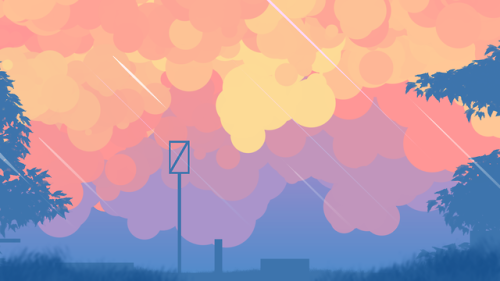


the best original works I’ve made so far tbh
Printssss | Twatter | FNAF porn
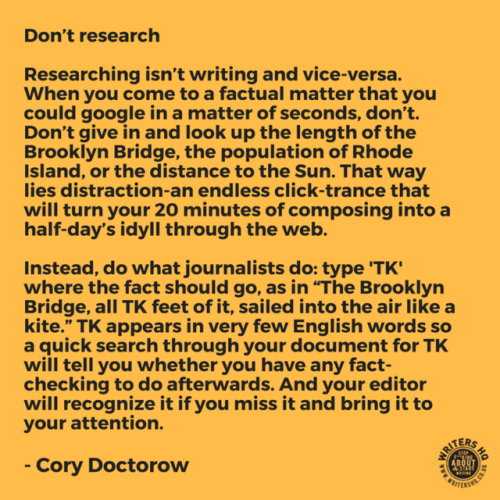
Forever indebted to @mostlysignssomeportents for this one.
Top 12 alternatives to Photoshop for digital painters and illustrators
Hello there!
Yes, we haven’t done this in a while… but our inbox and chat are swamped with questions on the subject, so this article was very much needed.
it’s a simple list of art apps, but we know you love those :D
Enough with the intro, here it is, a list of twelve art apps you may want to check out.

ArtRage is an art program for beginners and professionals. With its minimal interface, it’s easy to keep the essential tools at hand without stealing space from the canvas. Panels can be moved around and tools can be customised. We all know how important it is for digital artists to be able to modify brushes!
Pros: easy to use; friendly interface; essential tools from professional apps available; available for iOS, Android, Windows and Mac
Cons: it may get sluggish with big files and when using big brushes, but performances also depend on the running machine; limited selection of editing tools if compared to Photoshop - ArtRage is more of a painting program rather than an editing one.
Paid
ArtRage Lite is a different version at a cheaper price, mostly for beginners, but also for professionals if they need the essential.

Now free, Sketchbook is the famous app created by Autodesk for various platforms.
Pros: clean, friendly interface; easy to use; professional features; autosave feature
Cons: lack of official tutorials; doesn’t offer as many tools as other apps (it’s down to the essential); paid subscription in Adobe style for Enterprise License
Free and paid

Black Ink is a powerful little program few actually know, but there’s a reason: this isn’t your classing drawing app. What’s cool about it is the vast selection of special brushes, completely non-realistic, and definitely able to boost your creativity.
Pros: vast selection of customisable brushes; excellent performance
Cons: not very easy to use; non-intuitive interface
Paid

This is probably the most complete software for painting, drawing and animation. It was originally known as Manga Studio, but with its updates and addition of features, it became Clip Studio Paint.
This doesn’t say much about the quality of the features themselves considering the affordable price (if you haven’t used the app yet, that is), but among graphic apps, this one is the top seller.
Pros: professional features for illustrators; layout tools for comic/manga artists; 3D reference models; customisable tools; various sales with special prices
Cons: the interface may not appear intuitive at first; the program may lag (again, performance also depends on the running machine)
Paid

GIMP is the famous open source image editor originally created for GNU/Linux and available for OS X and Windows.
Best known as Photoshop’s main competition, this is a manipulation program for both beginners and professionals who love design.
It offers many professional features, making the program a powerful tool.
Pros: professional editing tools; supports different formats; supported by different platforms; active community
Cons: in spite of the simple design, many options are hidden and it takes time to discover all the features; slow startup
Free

Krita is an open source painting app created by artists for artists.
Pros: easy to use; intuitive interface; great brush workflow; brush stabilizer; customisable brushes; general good performance; very enthusiastic, although small, community
Cons: it may be slow or even crash depending on the running computer and the app’s version; very few editing tools compared to Photoshop
Free

MediBang Paint is a free and light app for drawing and painting, perfect for manga and comic creation.
Pros: vast selection of brushes; cloud sharing; friendly, minimal interface (non-desktop app); also available for iPad, iPhone and Android
Cons: requires an account to use all features; non-intuitive interface (desktop version)
Free

Mischief is a sketching app with essential tools, useful for brainstorming and ideation.
Pros: infinite drawing canvas; friendly interface; easy to use; cheap pro version
Cons: few updates; offers only the essential (but that’s the point); no editing/adjustment tools
Free and paid

Corel’s jewel, Painter is the most famous software that offers digital tools able to give a traditional feel to brushes and canvas.
Pros: different selection of media; many professional features; PS-friendly
Cons: certain brushes may work slow; not easy to use at first; the software may crash (this is the most common report); pricey
Paid

Paintstorm Studio is a professional software for digital painting. It’s focused on the use of brushes and blending, which makes the software a little gem in the digital painting field.
Pros: good brush workflow; brush stabilizer; “close gap” feature; customisable interface and tools; professional features; affordable price
Cons: non-intuitive interface (desktop version)
Paid

Procreate is the powerful drawing app for iOS.
With the very sensitive Apple Pencil, Procreate is so easy to use that many artists chose the iPad over the most famous graphic tablets.
Pros: friendly interface; makes it easy to organise files; excellent brush workflow; customisable brushes; video recording; affordable price
Cons: hidden features; only available for iPad
Paid

SAI is a simple app for artists who want to focus on painting and drawing.
It’s well known for its good pressure support and its essential tools for manga artists, but SAI can be used by any kind of artist who wants to paint.
Pros: easy to use; friendly interface; light software; customisable brushes; tons of (non-official) tutorials
Cons: limited selection of tools, even basic ones; limited canvas sizes and uses; it might crash from intensive work, especially with big canvases and brushes; supports only RGB colour mode; lack of support
Paid
HONOURABLE MENTION

Many call this app an advanced PaintTool SAI, and for a reason. FireAlpaca offers almost everything PTS has and more.
Pros: friendly interface; brush stabilizer; lineart selection; customisable brushes
Cons: no colour slider; limited brush control; although more advanced compared to PTS, the features are quite basic.
Free
We hope you’ll find this list useful.
If you think there are other apps that should have made this list, don’t hesitate to let us know!
Thank you and peace out,
G&M
Other articles:
10 inspiring and helpful YouTube channels for digital artists
6 inspiring Art Podcasts for digital artists
7 amazing Photoshop extensions and tools for digital artists
Why Krita is Awesome: A Collection of Reasons Why This Program is Worth Taking a Look At
Krita is a painting program that has been around for a while, and in the last few years, underwent major changes and improvements. Because of these improvements, many artists are using it not just because it is free, but because it offers amazing features. These are by no means all of the great things Krita has to offer, but simply some of my favorite features of the program.
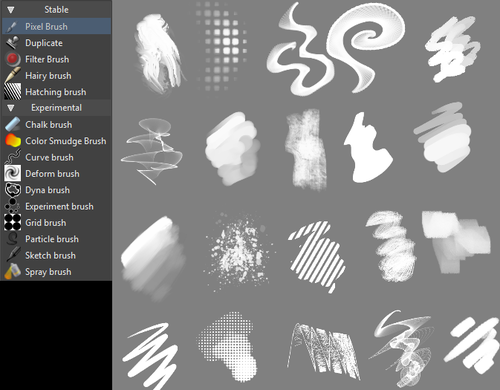
1. The Brush Engines.
Yes, engines. As in plural. There are many. And they all do different things. There is no way you could possibly capture all of its possibilities with one screen shot, but here are just some of the possibilities. Along side standard round, square, and shape, and textured brushes, there are brushes that smear, blend, and create interesting abstract strokes. There are brushes for filters, and one of my favorites, the Experiment Brush, which is basically a pre-filled lasso tool.
Brushes also support weighted smoothing, or brush stabilizers.

This is incredibly useful for line art. And while I do not usually use this feature, it is something that I feel many programs are lacking, such as Photoshop.
But its brushes aren’t the only thing about Krita with variety.

2. Color Selector Customization.
Whether you prefer something basic, or something more complicated, Krita will likely have what youre looking for. You are not likely to find yourself missing your other program’s color wheels. There are even more options than this, and other color selectors.

Gotta love that customization.
Krita also has some great naviation tools.

3. On the fly rotation, zoom, and brush sizing.
With krita, zooming, rotating, and brush size scaling are all smooth, and dynamic with the use of hot keys. These are features I miss when in other programs. To zoom, Ctrl+Middle mouse button, hover over the screen to zoom in and out. The same with shift rotates (press the ‘5’ key to reset rotation). Holding down shift and draging your brush on the canvas dynamically changes its size, allowing you to see the change, and get the exact size you want without brackets. Brackets also work, if that’s what you are used to. Krita also has highly customizable hot keys.

4. The Pop Up Pallet
The pop up pallet is a set of your 10 favorite brushes (which you can edit), and a built in color wheel that appears when you right click on the canvas. It is incredibly useful for switching between those few brushes that you use in almost every picture.

5. Real time, seamless tiles creation.
Pressing the W key in Krita will infinitely tile your canvas, and allow you to work real time on simple to complex tiled images. You can zoom in and out to see how your tiles work form a distance, and paint freely to create seamless artwork easily, without having to check using filters and manually tiling. Very usefull for patterns, backgrounds, and games.

6. The Symmetry Tool
This one goes without saying, Krita supports both horizontal and vertical symmetry, along with a brush that is capable of radial symmtry with as many directions as you like.

Go nuts, kid.
There are many more reasons why this program is awesome. And it is only going to get more awesome. And the coolest thing about it, is that it is 100% free. So go check it out! There’s nothing to lose. Krita isn’t for everyone, it can be hard to get the hang of, and it is not meant for photo editing, it is a program completely focused on digital painting from start to finish.
Give it a go and see if Krita is the program for you.
-
 superflyse reblogged this · 2 weeks ago
superflyse reblogged this · 2 weeks ago -
 abravelittletoaster reblogged this · 2 weeks ago
abravelittletoaster reblogged this · 2 weeks ago -
 littlemeowmeowmaeve reblogged this · 2 weeks ago
littlemeowmeowmaeve reblogged this · 2 weeks ago -
 littlemeowmeowmaeve liked this · 2 weeks ago
littlemeowmeowmaeve liked this · 2 weeks ago -
 merridelicious reblogged this · 2 weeks ago
merridelicious reblogged this · 2 weeks ago -
 merridelicious liked this · 2 weeks ago
merridelicious liked this · 2 weeks ago -
 keawi liked this · 2 weeks ago
keawi liked this · 2 weeks ago -
 more-silver-than-gold reblogged this · 2 weeks ago
more-silver-than-gold reblogged this · 2 weeks ago -
 macaroninoises reblogged this · 2 weeks ago
macaroninoises reblogged this · 2 weeks ago -
 chimichanghoe reblogged this · 2 weeks ago
chimichanghoe reblogged this · 2 weeks ago -
 let-tyrants-fear liked this · 2 weeks ago
let-tyrants-fear liked this · 2 weeks ago -
 my-contemplation reblogged this · 2 weeks ago
my-contemplation reblogged this · 2 weeks ago -
 wheels-of-eyes liked this · 2 weeks ago
wheels-of-eyes liked this · 2 weeks ago -
 raylaandcallum reblogged this · 2 weeks ago
raylaandcallum reblogged this · 2 weeks ago -
 koofo reblogged this · 2 weeks ago
koofo reblogged this · 2 weeks ago -
 kdndigital liked this · 2 weeks ago
kdndigital liked this · 2 weeks ago -
 indestructibleplum reblogged this · 3 weeks ago
indestructibleplum reblogged this · 3 weeks ago -
 forwesley reblogged this · 3 weeks ago
forwesley reblogged this · 3 weeks ago -
 spooky-pens reblogged this · 3 weeks ago
spooky-pens reblogged this · 3 weeks ago -
 instructions-are-included liked this · 3 weeks ago
instructions-are-included liked this · 3 weeks ago -
 bigbromelvin liked this · 3 weeks ago
bigbromelvin liked this · 3 weeks ago -
 octy-in-boots reblogged this · 3 weeks ago
octy-in-boots reblogged this · 3 weeks ago -
 octy-in-boots reblogged this · 3 weeks ago
octy-in-boots reblogged this · 3 weeks ago -
 octy-in-boots liked this · 3 weeks ago
octy-in-boots liked this · 3 weeks ago -
 nutmegnola reblogged this · 3 weeks ago
nutmegnola reblogged this · 3 weeks ago -
 brassorchids liked this · 3 weeks ago
brassorchids liked this · 3 weeks ago -
 melodiousramblings reblogged this · 3 weeks ago
melodiousramblings reblogged this · 3 weeks ago -
 theladymisandry reblogged this · 3 weeks ago
theladymisandry reblogged this · 3 weeks ago -
 isabelaoftheeasternseas reblogged this · 3 weeks ago
isabelaoftheeasternseas reblogged this · 3 weeks ago -
 dearace reblogged this · 3 weeks ago
dearace reblogged this · 3 weeks ago -
 ravenave liked this · 3 weeks ago
ravenave liked this · 3 weeks ago -
 mattikitku reblogged this · 3 weeks ago
mattikitku reblogged this · 3 weeks ago -
 thesunatnight reblogged this · 4 weeks ago
thesunatnight reblogged this · 4 weeks ago -
 thesunatnight liked this · 4 weeks ago
thesunatnight liked this · 4 weeks ago -
 geekg1rl3 reblogged this · 4 weeks ago
geekg1rl3 reblogged this · 4 weeks ago -
 geekg1rl3 liked this · 4 weeks ago
geekg1rl3 liked this · 4 weeks ago -
 mattikitku liked this · 4 weeks ago
mattikitku liked this · 4 weeks ago -
 missdisgracetoherrace liked this · 4 weeks ago
missdisgracetoherrace liked this · 4 weeks ago -
 the-reconing reblogged this · 4 weeks ago
the-reconing reblogged this · 4 weeks ago -
 lilholmes liked this · 4 weeks ago
lilholmes liked this · 4 weeks ago -
 morgane29 reblogged this · 4 weeks ago
morgane29 reblogged this · 4 weeks ago -
 redwolfone reblogged this · 4 weeks ago
redwolfone reblogged this · 4 weeks ago -
 jigglypuffremix reblogged this · 4 weeks ago
jigglypuffremix reblogged this · 4 weeks ago -
 jigglypuffremix liked this · 4 weeks ago
jigglypuffremix liked this · 4 weeks ago -
 wewereborntodiee liked this · 4 weeks ago
wewereborntodiee liked this · 4 weeks ago -
 nineforthetomb-andallthatwaslost liked this · 4 weeks ago
nineforthetomb-andallthatwaslost liked this · 4 weeks ago -
 puppiesrulethisworld liked this · 4 weeks ago
puppiesrulethisworld liked this · 4 weeks ago -
 cosmic-philanthropy liked this · 4 weeks ago
cosmic-philanthropy liked this · 4 weeks ago -
 hapsoli liked this · 4 weeks ago
hapsoli liked this · 4 weeks ago -
 almostdeepestthing liked this · 4 weeks ago
almostdeepestthing liked this · 4 weeks ago